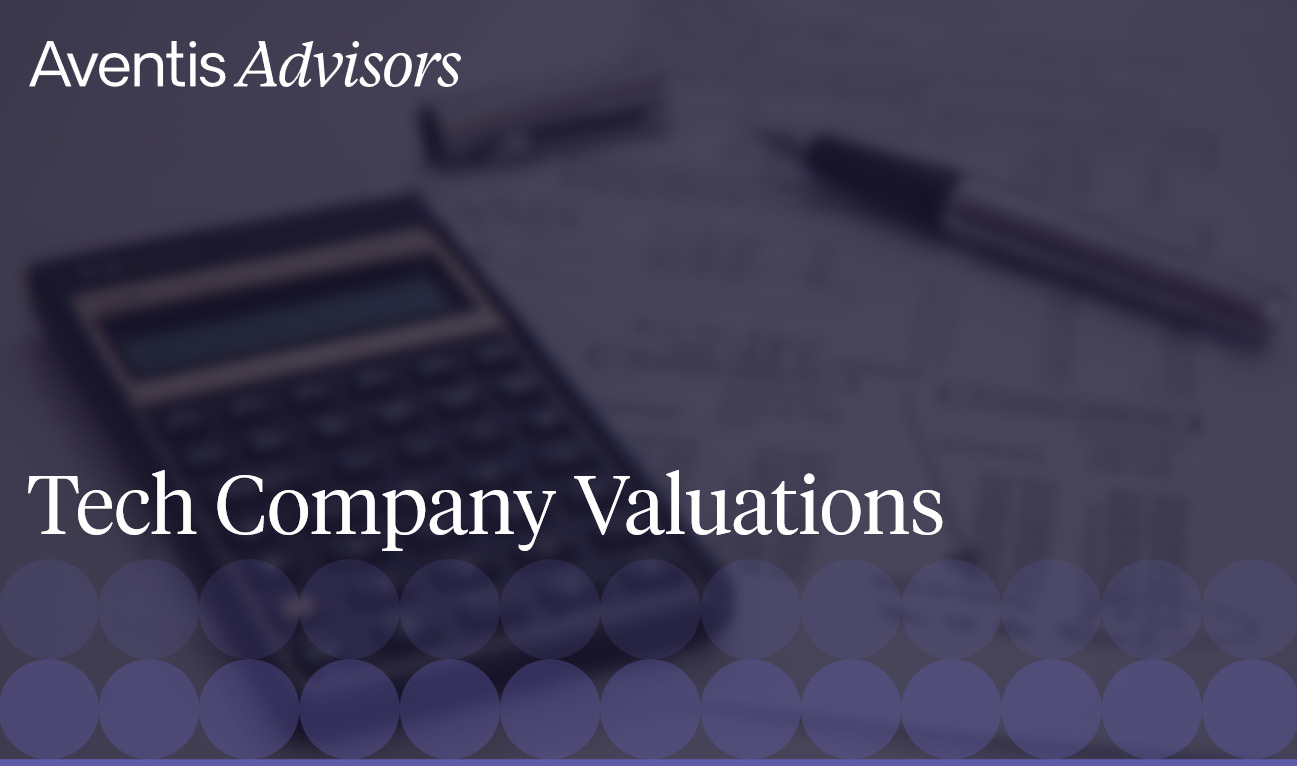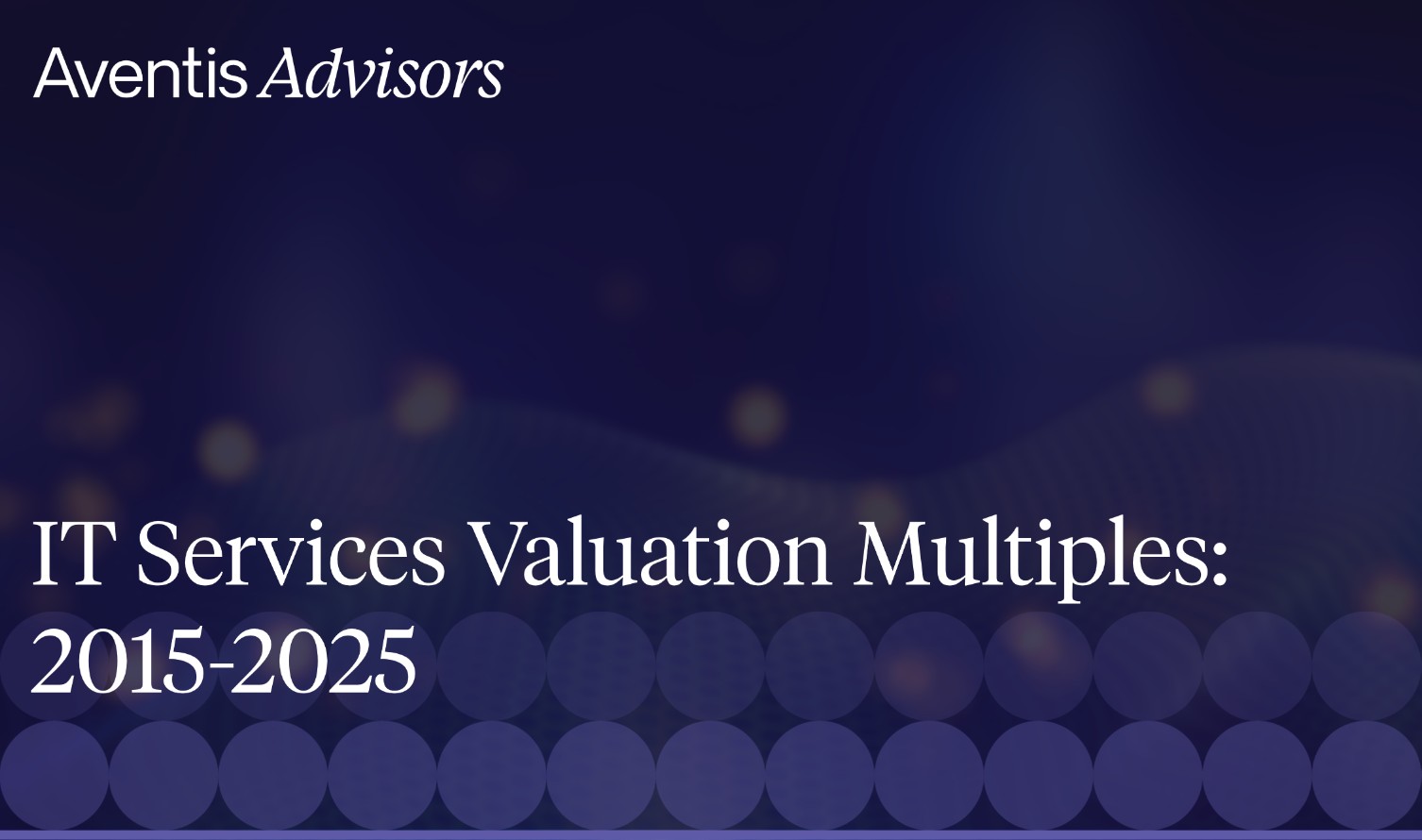Software valuations influence markets and shape every exit decision. Over the past decade, valuation multiples have shifted sharply as investor priorities moved from growth at all costs to efficient, profitable expansion. In this article, we look at how software valuation multiples changed worldwide from 2015 to 2025 and why they matter to founders, executives, and investors.
Publicly traded software companies report valuation multiples every day, but the link to private deals is not always straightforward. Understanding that connection helps with both market read and exit timing. Public pricing now rewards cash flow, sustainable margins, and efficient growth; trends such as AI adoption, vertical SaaS, and usage-based pricing also shape investor expectations.
Private software firms differ meaningfully from their listed peers. Many are smaller, more focused on profitability, and operate outside major U.S. exchanges. To provide a more relevant view, we analyzed hundreds of private software M&A transactions completed between 2015 and September 2025. We examine how multiples vary by deal size, geography, business model, and growth profile to give practical benchmarks for funding and exits.
Table of Contents
- Global Trends in Software Valuation
- Software Valuation Multiples
- What Drives Valuation Differences
- Market Outlook for Software Valuations
- About Aventis Advisors
Global Trends in Software Valuation
Understanding how software valuation multiples have evolved globally over the past decade provides essential context for today’s M&A market. After a long period of expansion fueled by low interest rates and high growth expectations, multiples reached record levels in 2021 before normalizing in the following years. To assess these changes accurately, we focused our research on private-market transactions rather than public-company benchmarks.
Private Markets Research Methodology
For this research, we reviewed a proprietary database of more than 45,000 software-company transactions completed worldwide. From this dataset, we identified 1,262 transactions with disclosed valuation multiples, including EV/Revenue and EV/EBITDA. Within this subset, 584 transactions reported EV/EBITDA multiples, allowing us to benchmark both growth-oriented and mature software companies.
Because valuation multiples are disclosed for only a fraction of private-market deals, the sample is not fully comprehensive. Even so, thousands of transactions across geographies, company sizes, and business models provide meaningful insight into how software companies are valued and what drives those differences.
Our review covered transactions from 2015 through September 2025 and examined how multiples vary by:
- Deal size – how larger transactions typically command premium valuations
- Geography – how U.S.-based SaaS companies and European peers differ in pricing
- Business model and growth profile – how recurring revenue models and strong cash flow affect EV/Revenue and EV/EBITDA multiples
The dataset included both on-premise and SaaS companies, reflecting the ongoing shift of many traditional software vendors toward subscription and cloud-based models.
This foundation allows us to explore how valuation multiples have evolved over time and what patterns have emerged across market segments.
Software Valuation Multiples
Over the past ten years, software companies have consistently been valued at robust valuation multiples, reflecting strong investor appetite for scalable, high-margin business models.
Across 1,262 transactions with disclosed EV/Revenue multiples, the median revenue stood at 3.7x, with the top quartile reaching 7.3x and the bottom quartile at 2.0x. This highlights how key factors such as growth rate, customer base quality, and recurring revenue influence outcomes.
584 transactions reported EV/EBITDA multiples for profitability-focused metrics, showing a median of 18.6x EBITDA. More profitable or strategically positioned companies reached 34.4x EBITDA or higher, while slower-growth or concentrated businesses traded at 10.8x.
These figures show how company performance and risk profile affect valuation. Businesses with strong revenue growth, diversified customers, and predictable earnings typically fall in the upper quartile, while smaller or lower‑growth companies trade closer to the lower quartile.
Median EV/Revenue multiples for software companies
Revenue multiples are widely used when valuing software companies, especially those investing heavily in growth while generating limited or no profit.
From our sample of 1,262 transactions, from 2015 to 2017, software company EV/Revenue multiples were relatively modest, mostly in the 2–4x range, reflecting steady but conservative market conditions.
In 2018–2019, multiples gradually expanded, reaching 4–5x as investor appetite for scalable SaaS businesses increased and cloud adoption accelerated.
A sharp spike occurred in 2021, when the median multiple peaked at 6.7x, fueled by abundant capital, low interest rates, and a strong focus on growth over profitability.
By 2022, sentiment shifted dramatically as interest rates rose and risk appetite declined, driving a steep correction with multiples falling to roughly 3x.
Through 2023 and 2024, EV/Revenue multiples stabilized at these lower levels, with H1 2025 medians at 2.6x, signaling a return to disciplined, profitability-driven dealmaking after the post-pandemic boom.
There is still significant dispersion in the market:
- Bottom quartile companies: ~2.0x revenue
- Top quartile companies: >7.3x revenue
Companies achieving premium valuations tend to share several characteristics:
- Large and growing addressable markets
- High revenue growth with a clear path to profitability
- Strong SaaS metrics, such as net revenue retention, low customer churn, and healthy LTV/CAC ratios
While revenue multiples remain a useful benchmark, they are ultimately a proxy for profitability. Investors still base long-term value on the company’s ability to generate sustainable cash flow.
Median EV/EBITDA multiples for software companies
EBITDA multiples are commonly used to value mature software companies with stable cash flow, slower growth, or niche operations.
From 1,262 transactions with disclosed EV/EBITDA multiples, the median for the past ten years is 18.6x. From 2015 to 2019, software company EV/EBITDA multiples remained relatively steady, fluctuating mostly between 15x and 20x, indicating a stable and balanced valuation environment.
In 2020, valuations dipped slightly to 14.6x, reflecting uncertainty at the onset of the pandemic.
This was followed by a strong surge in 2021, when the median multiple climbed to 26.1x in H2, driven by abundant capital, ultra-low interest rates, and aggressive growth-focused investment.
The momentum peaked in H2 2022 at 39.9x, marking the highest valuation levels of the decade, before a rapid correction began later that year as rising interest rates and tightening capital markets shifted investor focus toward profitability.
Through 2023 and 2024, EV/EBITDA multiples normalized to the 17–22x range, reflecting a return to more disciplined, fundamentals-driven pricing. By H2 2025, the median multiple stood at 17.6x, reinforcing this stabilization. Given the small sample size, the apparent uptick to 28.4x in H2 2025 should be viewed cautiously.
What Drives Valuation Differences
SaaS vs. On-Premise Software Multiples
In recent years, much of the discussion around software valuations has focused on Software-as-a-Service (SaaS) companies. In our analysis, we did not separate SaaS and on-premise vendors because the distinction has largely blurred.
Many traditional vendors now offer cloud-enabled or hybrid delivery and rely on subscription-based revenue. At the same time, investors have shifted focus from pure growth to efficiency and sustainable cash flow, meaning even SaaS businesses must demonstrate profitability to command premium valuations.
In practice, SaaS companies still trade at slightly higher revenue multiples, largely due to lower technical debt and stronger long-term growth prospects. However, this spread has narrowed significantly compared with the high-growth years before 2022.
SaaS valuation multiples: 2015-2025
Valuation Trends (2015-2025)
Software valuation multiples have shifted significantly over the past decade, reflecting changing investor priorities and market conditions. From 2015 to 2019, valuation multiples remained stable, typically ranging from 2–4x EV/Revenue and 15–20x EV/EBITDA. Multiples began to climb in 2018–2019 as confidence in recurring-revenue models grew.
Valuations peaked in 2021, when EV/Revenue reached 6.7x and EV/EBITDA 26–40x, driven by record-low interest rates, abundant capital, and fierce competition for high-growth SaaS assets.
As interest rates rose and liquidity tightened in late 2022, sentiment shifted sharply. Multiples fell below 3x EV/Revenue and 15–18x EV/EBITDA, signaling a renewed focus on profitability. Through 2023 and 2024, valuations stabilized, and by mid-2025 the median stood at 2.8x EV/Revenue and 17.6x EV/EBITDA. A small late-2025 uptick appears in the data but remains statistically inconclusive.
Overall, software valuations have normalized well below their 2021 highs, reflecting a more disciplined, fundamentals-driven market.
Company Size and Scale
Company size remains one of the strongest predictors of valuation outcomes in software M&A. Our dataset of 1,262 transactions shows a clear size premium in software M&A. Larger deals consistently achieve higher valuation multiples on both EV/Revenue and EV/EBITDA.
- Small transactions (<$5M) trade at 2.1x EV/Revenue and 4.8x EV/EBITDA, reflecting higher perceived risk, limited scalability, and founder dependency.
- Mid-sized deals ($50–100M) reach 3.7x EV/Revenue and 7.4x EV/EBITDA, supported by more institutionalized operations and stronger growth visibility.
- Large transactions ($100–500M) average 5.3x EV/Revenue and 9.1x EV/EBITDA, benefiting from established market positions and recurring revenue models.
- Top-tier deals ($500M+) achieve 6.7x EV/Revenue and 11.1x EV/EBITDA, driven by global reach, buyer competition, and proven scalability.
Across all 1,262 deals, the median stands at 3.7x EV/Revenue and 18.6x EV/EBITDA, though this masks wide variation by company size. The data underscores how scale drives valuation premiums.
Why Larger Companies Trade Higher
Bigger software companies carry less perceived risk, enjoy more diversified customer bases, and have experienced management teams. Their cash flows are more predictable, which supports higher EBITDA multiples. They also attract more investor competition, as many private equity funds and strategic buyers focus on larger, proven businesses.
Cross-regional Valuation Differences
Geography continues to play a major role in software company valuations. Firms in larger, more mature markets generally achieve higher multiples, supported by stronger growth prospects, larger addressable markets, and more competitive buyer dynamics.
United States companies lead both in revenue and earnings multiples, with medians of 5.0x EV/Revenue and 24.8x EV/EBITDA. This premium reflects the size and global scalability of the U.S. market as well as larger deal sizes. The median U.S. transaction of $250 million is well above the global median of $55 million, which contributes to higher overall valuations.
Among other developed markets, Australia and Norway stand out with elevated EV/Revenue multiples of 4.2x and 4.8x, driven by active local SaaS ecosystems and strong buyer demand. The United Kingdom (3.3x) and Sweden (3.2x) fall in the mid-range, supported by steady but more measured pricing.
France (2.9x) and Canada (2.7x) show more conservative valuations, reflecting smaller market sizes and less intense competition among acquirers.
Across all geographies, developed markets tend to achieve premium multiples, but the extent of that premium depends on growth expectations, capital availability, and local buyer activity.
Market Outlook for Software Valuations
Short-Term (2026) Expectations
Software valuation multiples are expected to remain largely stable through 2026, with limited signs of broad-based recovery. Buyers continue to favor efficiency, cash flow visibility, and disciplined growth, while pure revenue expansion is no longer enough to justify premium pricing. Many acquirers, particularly private equity firms, have ample capital but are deploying it cautiously, focusing on assets that demonstrate both resilience and scalability. This selectivity keeps average multiples flat even as high-quality assets attract competitive bidding.
Macroeconomic conditions remain a mixed picture for dealmaking. While inflation pressures have eased, interest rates remain relatively high by historical standards, keeping financing costs elevated and tempering aggressive valuations. Public market comparables have improved modestly, but the link between public and private valuations remains weaker than in prior cycles, as buyers emphasize profitability and working-capital efficiency over momentum-driven growth stories.
Within the private market, the valuation gap between top-tier and mid-market software companies is expected to widen further. Profitable, recurring-revenue businesses operating in essential segments, such as cybersecurity, infrastructure software, and AI-enabling tools, are likely to see mild multiple expansion. In contrast, smaller or less differentiated vendors may face stagnant or even declining multiples as investors prioritize risk-adjusted returns. Overall, 2026 is likely to be a year of consolidation and cautious optimism rather than broad valuation recovery.
Long-Term Software M&A Outlook
Over the long term, software M&A will remain a core element of both strategic and private equity investment strategies. The sector’s recurring-revenue models, scalability, and essential role in business operations continue to make it resilient through economic cycles and attractive across market conditions.
While the valuation peaks of 2021 are unlikely to return, a gradual normalization of multiples is expected as software adoption deepens across industries and digital transformation initiatives accelerate. Investors are placing greater emphasis on operational efficiency, margin visibility, and customer retention; traits that support durable, cash-generating business models over purely growth-led ones.
Private equity investors are poised to expand their presence through disciplined buy-and-build strategies, consolidating niche verticals to create scale and synergy. Strategic acquirers, meanwhile, will target software assets that enhance innovation or extend product ecosystems, particularly in areas such as AI enablement, cybersecurity, and industry-specific SaaS.
Despite cyclical fluctuations, software’s role as a critical enabler of productivity, automation, and innovation will continue to underpin steady M&A activity. Structural demand, recurring revenue visibility, and investor familiarity with the business model should sustain healthy long-term interest in the sector.
About Aventis Advisors
Monitoring software company valuations and transaction activity provides valuable insight into market trends and exit timing. Every company is unique, just like every founder’s journey. That is why specialized guidance matters, particularly from advisors who understand the software market in depth.
Software M&A specialists help founders navigate valuation dynamics, manage complex deal processes, and negotiate effectively while maintaining focus on day-to-day operations. The right partner can make a measurable difference in both deal certainty and value realization.
Aventis Advisors is an independent M&A advisory firm focused on technology and growth companies. We combine sector expertise with rigorous data analysis to help founders, investors, and boards make informed decisions.
To explore your company’s valuation and understand the transaction process in more detail, get in touch with our team.





